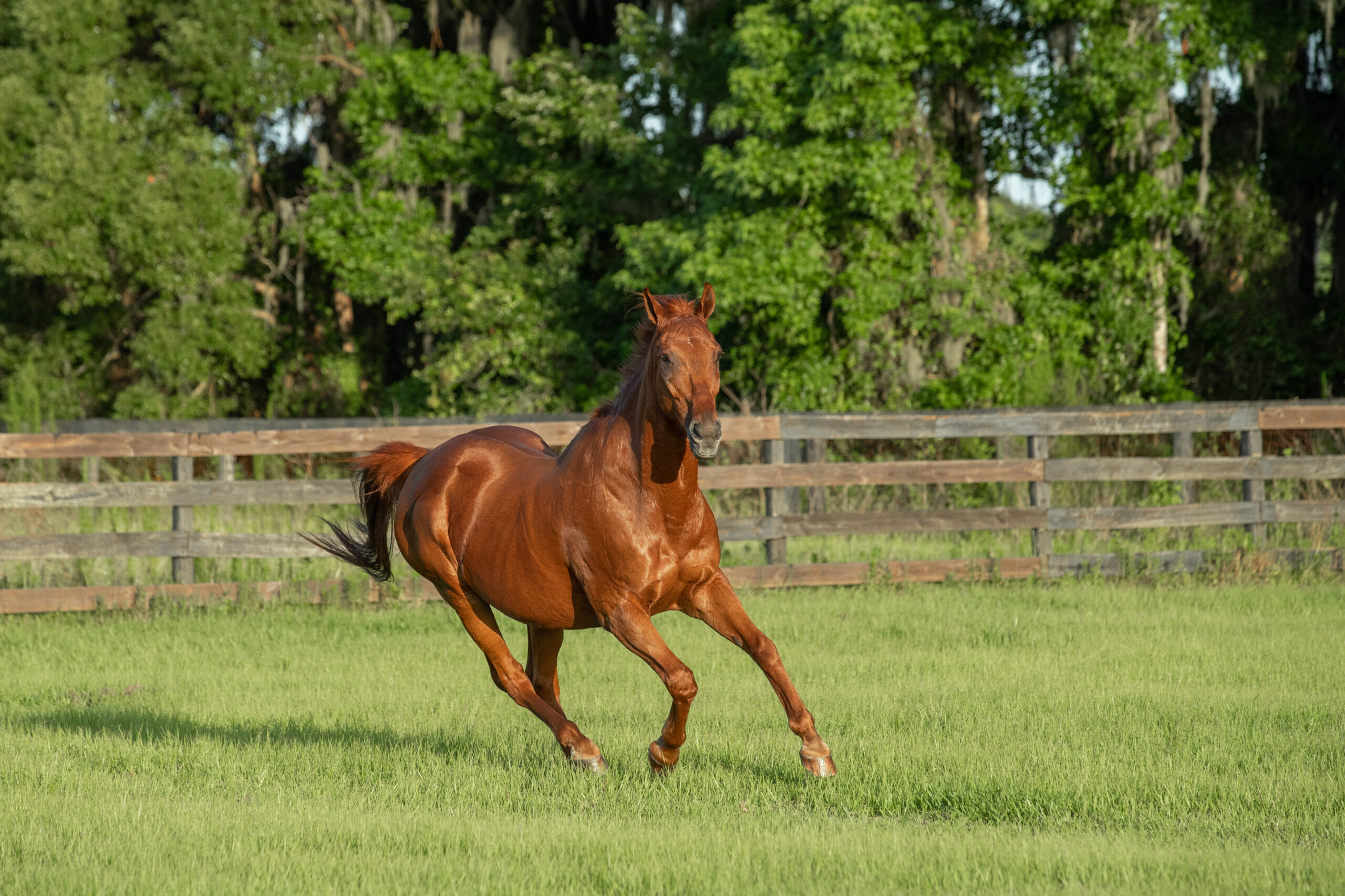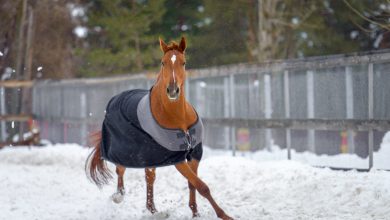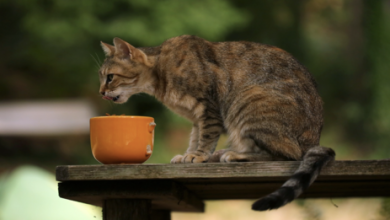Keep Your Arthritic Senior Horse Feeling Good Year-Round

This article is part of our Navigating Equine Arthritis Awareness Campaign, brought to you by American Regent Animal Health.
If your aging horse is developing or battling arthritis, it’s time to start taking extra precautions. For each season of the year, you can put specific considerations into place to keep him feeling good. What your arthritic senior needs will depend on his activity level, severity of diagnosis, and discipline. But here are some basic things you can do to keep him feeling good through all four seasons.
Winter
One of the best ways you can help an older horse cope with arthritis in the winter months is to have a plan to keep him moving. Regular exercise not only encourages natural lubrication of joints but helps preserve the muscle tone that holds joints stable. Inactivity, even for a few days at a time, can dramatically accelerate the decline of an older, arthritic horse.
Creating a smaller, more protected pasture in an area with better footing is one possible solution. Look for an area where a building or stand of trees might act as a windbreak and the elevation and contours are such that puddles don’t form to freeze into ice patches. Putting an older horse with arthritis in such a space with a friendly companion might be enough to help him stay active, and placing piles of hay at different locations in the space will also help keep him moving.
[Understanding Arthritis and Joint Structure]This is also the time to ensure he has easily accessible water, as horses tend to drink less in colder weather in general. To ensure that your horse drinks enough, consider providing warm water at least once a day. For pastured horses, consider a tank heater. Studies have shown that providing warm water for your horse can increase his water consumption by as much as 40%—and reduce colic risk. Keep his water in a spot where he can access it easily without having to navigate icy hills, or uneven footing.
Spring
The spring is a great time to start legging up your arthritic senior if he’s still able to be ridden, with extra support. However, between the cold nights where the ground freezes, and the warmer days when it turns to mud, consider how the ground might impact him. Riding through mud or uneven footing is hard on the joints, so find safe ground to keep him moving and ensure you’re properly warming up and cooling down.
If your horse gets daily turnout, it’s best to keep him inside when ground is really frozen. If he lives outside full-time, he could fare slightly better with the icy ground than his barn-housed counterparts, but is still at risk for abscesses and falls. No matter his work schedule, and whether he’s barefoot or shod, maintain a regular trimming/shoeing schedule year-round to keep your horse’s feet in the best condition. Also check and clean his feet daily. If his feet are especially sensitive, keeping him shod might lower his abscess risk.
This is also the time to think about spring shots, and fecal exams to determine deworming protocols. Twice-yearly visits from your vet make it possible to catch early signs of conditions common to older horses, and spring is a great time to schedule that visit.

Summer
The dog days of summer can mean more riding time, or chances to exercise your senior, but consider how the heat might take a toll. Installing (safe) fans in the barn to keep him comfortable, shaded places to beat the heat, and avoiding heat exhaustion by riding strategically when it’s not too hot are all things you can do to help your senior. With under-saddle exercise, keep expectations realistic. Your aging horse that’s battling arthritis can benefit from movement, but don’t overdo it.
An arthritic senior that has to fight herd mates for food might drop weight in extreme heat. Consider feeding him alone or with a group of friendly horses so that he doesn’t have to scrap for scraps. If you’re riding more in the summer and your arthritic senior is getting more exercise, don’t forget to check your tack fit! The last thing an arthritic senior needs is a saddle that pinches. Consider a pad with contouring to fit your senior’s aging back. Look into equine bodywork to keep him feeling good, and supplement as needed for joint support.
Fall
Heading into the cooler days of fall, it’s another great time of year to schedule your second yearly vet check-up. This is also the time to start planning for winter, and how you’re going to keep your senior horse comfortable.
Movement remains crucial in this season for the arthritic senior. Senior horses with multiple arthritic joints often do best when they have 24/7 access to a paddock or pasture (along with adequate shelter). Be sure to maintain pastures and arenas so your horse isn’t slogging through deep or uneven footing. Nail down his nutrition, so that he doesn’t begin to drop weight in the winter. Consider his shoeing situation for the winter. Will he need pads or shoes on to stay comfortable? Do you have safe footing for him to navigate his space even as colder weather creeps in? Fall is a great time to start thinking ahead to help him cope in the colder months.
Year-Round Basics
Although each season might call for a few tweaks to help your arthritic senior thrive, there are a few things you can do year-round for him. Providing movement will help keep him limber; as they say, motion is lotion for the joints. Supplementing or using products to promote joint health and comfort can be very beneficial. Talk with your vet to determine a course of action. Twice-yearly vet visits can catch signs of health issues early on. Strategic placement of feed and water can keep him eating and drinking without having to strain his joints to access it. Paying attention to small details like these are simple things you can do to keep your arthritic senior feeling good, year-round.



